E-learning platforms have transformed the landscape of education, training, and professional development in recent years. These platforms use digital technologies to deliver courses, tutorials, and learning materials remotely, making education accessible to people worldwide, regardless of their location or schedule. Whether it’s for corporate training, academic learning, or personal development, e-learning platforms offer flexible, convenient, and scalable solutions to meet the diverse needs of learners.
What Are E-Learning Platforms?
E-learning platforms are online systems or websites that provide a wide range of educational content and resources. These platforms typically offer interactive features, such as video lectures, quizzes, discussion forums, and peer-to-peer learning opportunities. They can be used by students, professionals, or organizations to enhance their knowledge and skills in a variety of fields, from technical skills to soft skills, and everything in between.
Benefits of E-Learning Platforms
- Accessibility and Flexibility One of the primary advantages of e-learning platforms is accessibility. Learners can access courses and content from anywhere in the world, provided they have an internet connection. This flexibility allows learners to study at their own pace, from the comfort of their home or any location that suits them. With online learning, there is no need to adhere to a rigid schedule or commute to a physical classroom.
- Cost-Effectiveness E-learning platforms can be more affordable compared to traditional education methods. There are no commuting expenses, and many platforms offer free or low-cost courses. For organizations, e-learning is a cost-effective way to train large teams, as it eliminates the need for physical training materials, venues, and instructors. Additionally, many platforms offer scalability, so organizations can train an unlimited number of employees at once.
- Personalized Learning Experience E-learning platforms allow learners to progress at their own pace. Unlike traditional classroom settings, where everyone must follow the same schedule, e-learning offers personalized learning experiences. Learners can choose when to take courses, how much time to spend on each topic, and even revisit lessons as needed. This customization helps learners absorb information more effectively and stay motivated throughout the process.
- Variety of Learning Materials E-learning platforms offer a wide range of materials and content formats, such as videos, podcasts, webinars, articles, quizzes, and interactive simulations. This variety of media helps cater to different learning styles—whether visual, auditory, or kinesthetic—and ensures that the content remains engaging. It also enables learners to choose the type of material that suits their preferences.
- Scalability and Convenience for Organizations For businesses, e-learning platforms provide a scalable solution to training. Companies can train a large number of employees simultaneously without worrying about the logistics of in-person training sessions. These platforms also make it easy to update training content and track employees’ progress, ensuring that training materials remain relevant and employees are continually improving their skills.
- Global Reach and Collaboration E-learning platforms connect learners from all over the world. This international reach allows for cross-cultural collaboration, exposure to diverse perspectives, and the ability to form global networks. For organizations, this means the ability to provide training to a global workforce, regardless of geographical boundaries. Additionally, many platforms include collaborative features, such as discussion boards and group projects, which foster peer learning and community-building.
Types of E-Learning Platforms
- Learning Management Systems (LMS) LMS platforms are the backbone of most e-learning programs. They provide an organized environment where learners can access courses, track their progress, and interact with instructors or peers. Examples of LMS platforms include Moodle, Blackboard, and Canvas. These systems are commonly used by educational institutions and businesses for employee training.
- Massive Open Online Courses (MOOCs) MOOCs are a popular type of e-learning platform that offers free or low-cost courses to a large number of learners. Platforms like Coursera, edX, and Udemy host MOOCs that cover a wide range of topics, from business and technology to arts and humanities. These platforms often feature courses from top universities and companies, making high-quality education accessible to anyone with an internet connection.
- Corporate Training Platforms Designed specifically for businesses, corporate training platforms provide e-learning solutions for employee development. These platforms allow businesses to create, manage, and deliver training programs tailored to their workforce’s needs. They also offer tools for tracking employee progress, performance analytics, and compliance training. Examples of corporate training platforms include LinkedIn Learning, Skillsoft, and TalentLMS.
- Educational Platforms for Schools and Universities Many schools and universities use e-learning platforms to supplement or replace traditional classroom teaching. These platforms allow educators to post assignments, share resources, and communicate with students. Students can access recorded lectures, participate in discussions, and submit their work online. Examples include Google Classroom, Schoology, and Microsoft Teams for Education.
- Specialized E-Learning Platforms Some e-learning platforms focus on specific industries or types of learning, such as technical training, language learning, or creative skills. Examples include Codecademy for coding, Duolingo for language learning, and MasterClass for specialized courses in arts, business, and lifestyle. These platforms provide learners with in-depth expertise in particular fields, making them ideal for those looking to advance in a specific area.
Challenges of E-Learning Platforms
- Lack of Face-to-Face Interaction One of the main drawbacks of e-learning is the absence of direct, in-person interactions. Some learners may feel isolated or disengaged without the social aspect of traditional classroom settings. However, many platforms mitigate this challenge through virtual collaboration tools, discussion boards, and live webinars.
- Self-Discipline and Motivation E-learning requires a significant amount of self-motivation and time management skills. Without a structured schedule, some learners may struggle to stay on track. To combat this, many platforms incorporate deadlines, assessments, and progress tracking to encourage accountability.
- Technical Issues Technical difficulties, such as poor internet connectivity, software glitches, or platform errors, can disrupt the learning experience. This issue can be especially challenging for learners in remote areas with limited access to reliable technology.
Conclusion
E-learning platforms have revolutionized the way people access education and training. They offer unmatched flexibility, cost-effectiveness, and scalability, making them ideal for both individuals and organizations. As technology continues to evolve, the future of e-learning holds even greater promise, with more interactive, immersive, and personalized learning experiences on the horizon. By leveraging the benefits of e-learning, learners and businesses alike can unlock new opportunities for growth and development.



